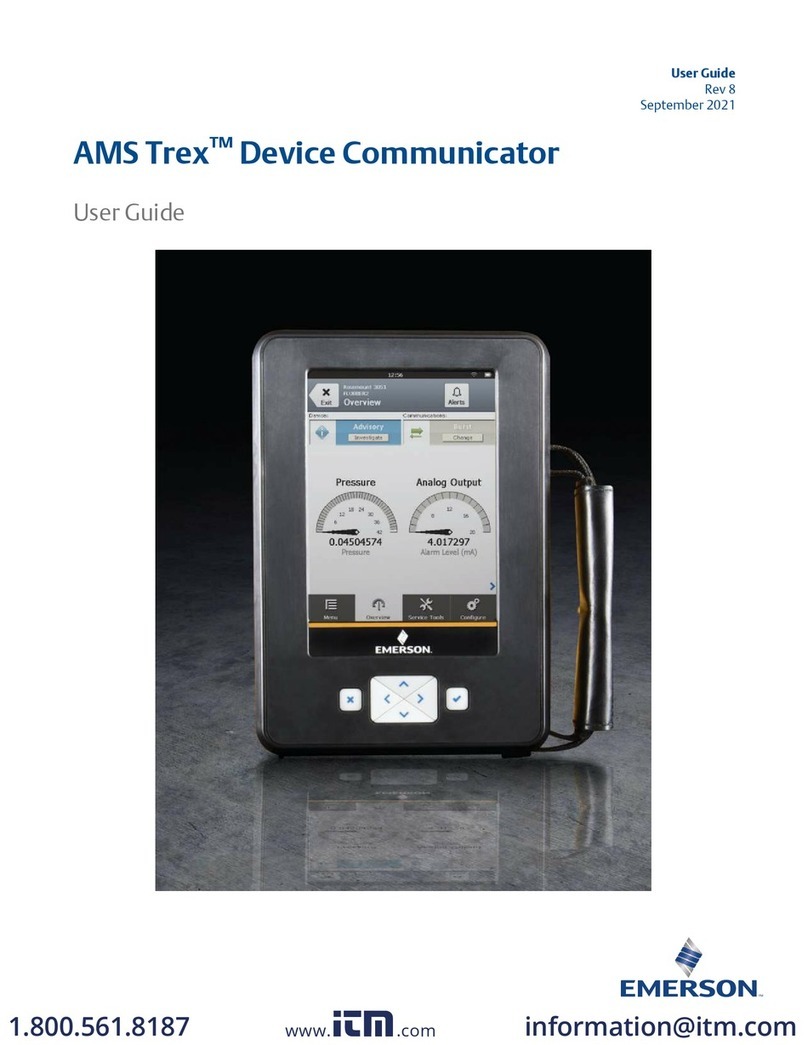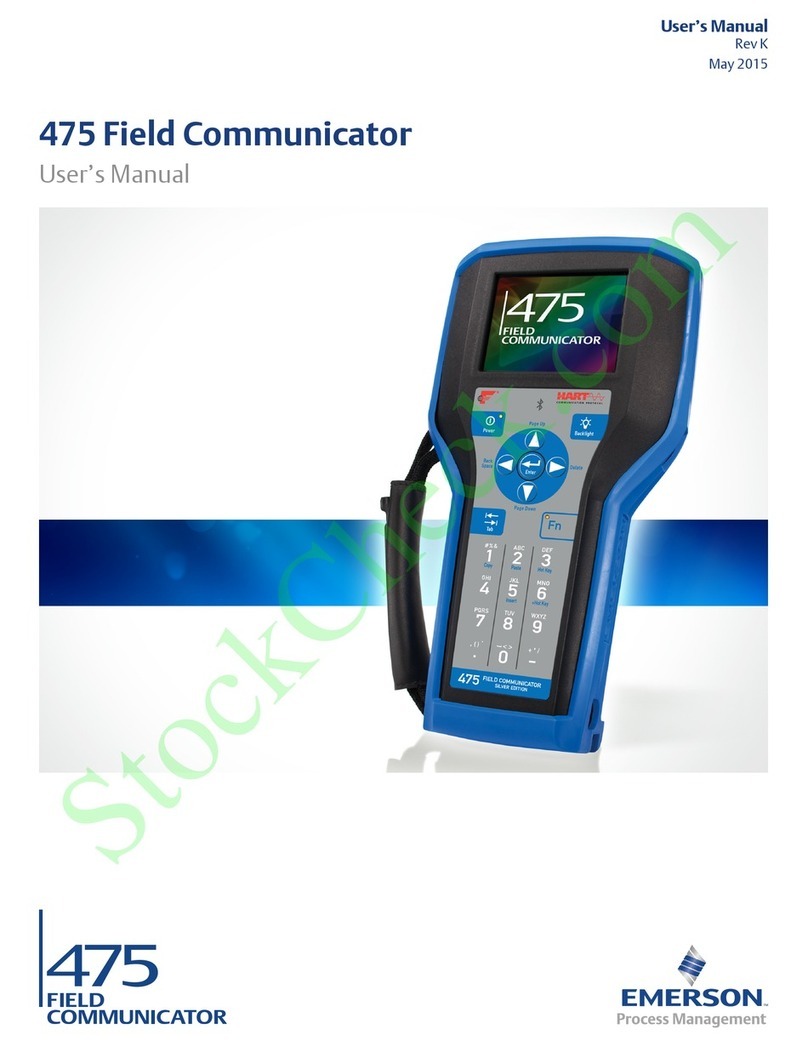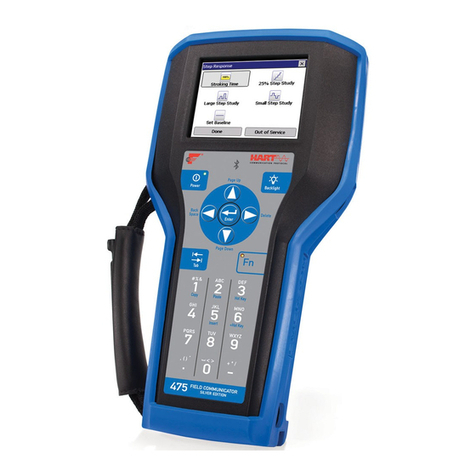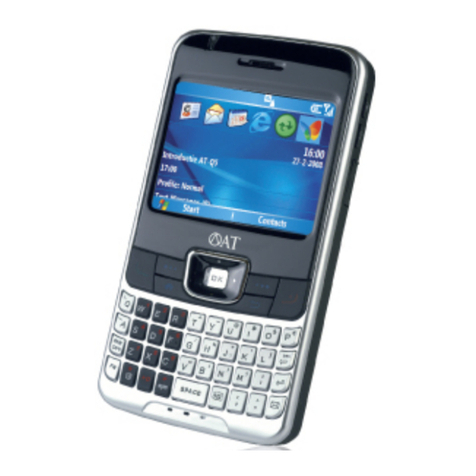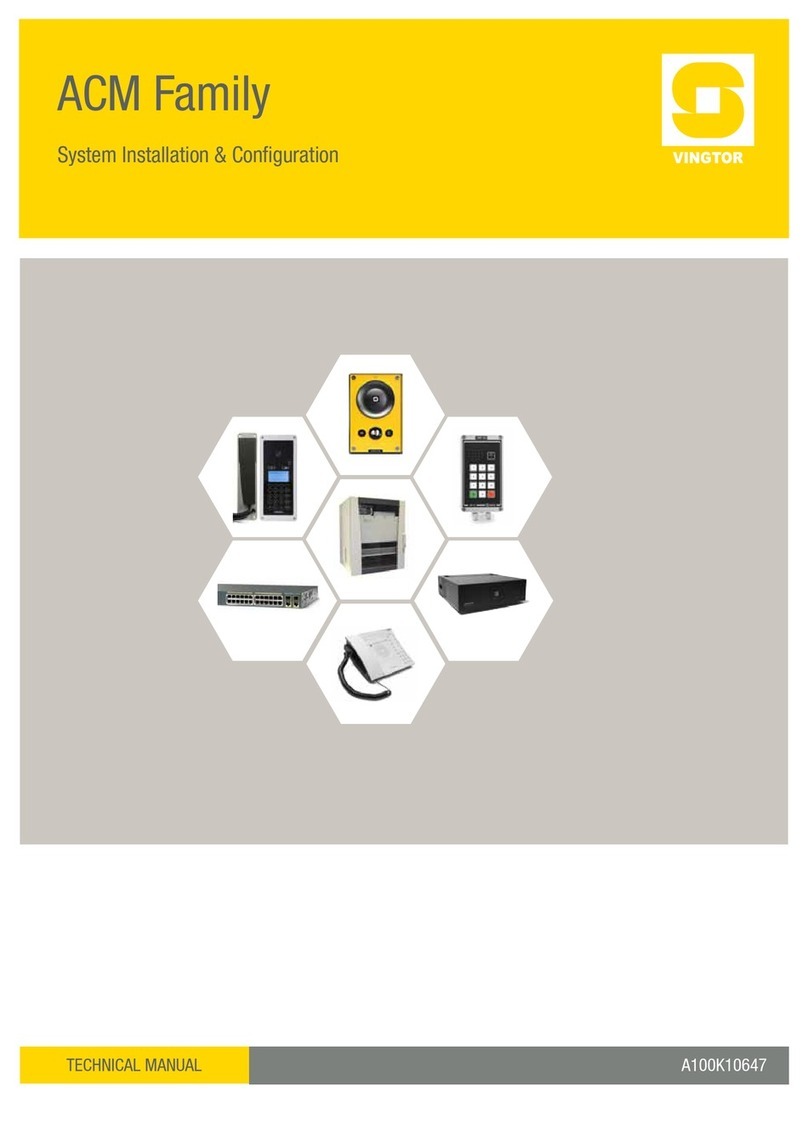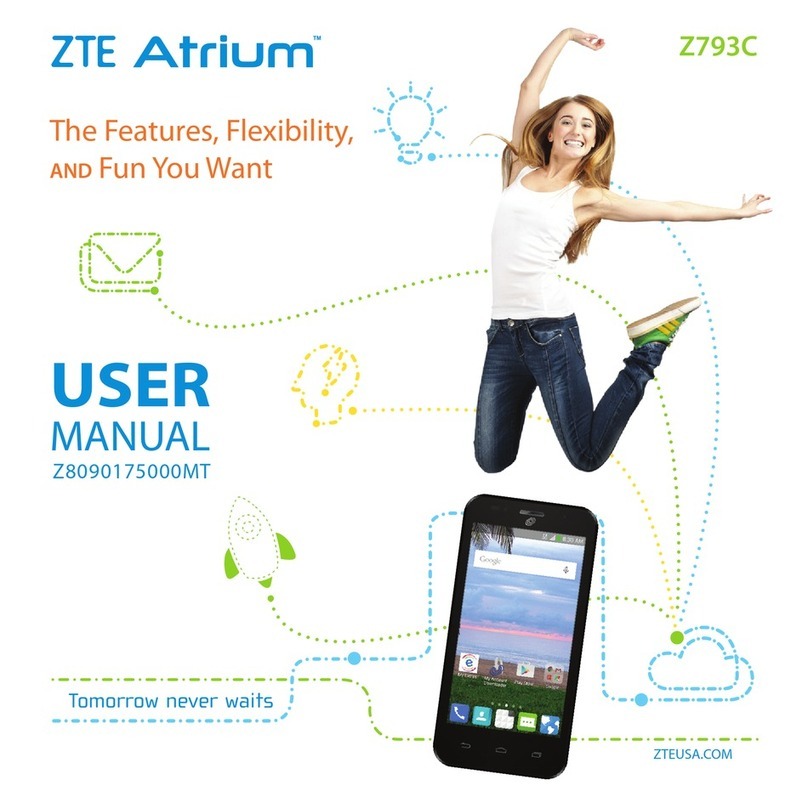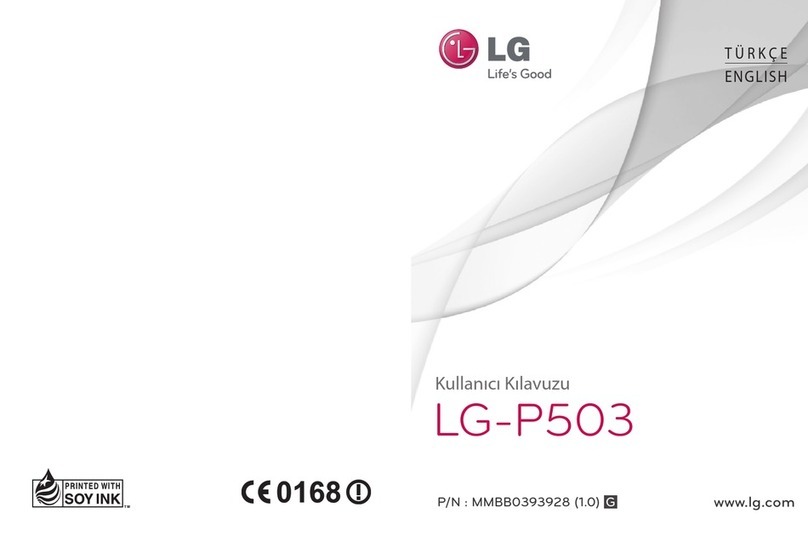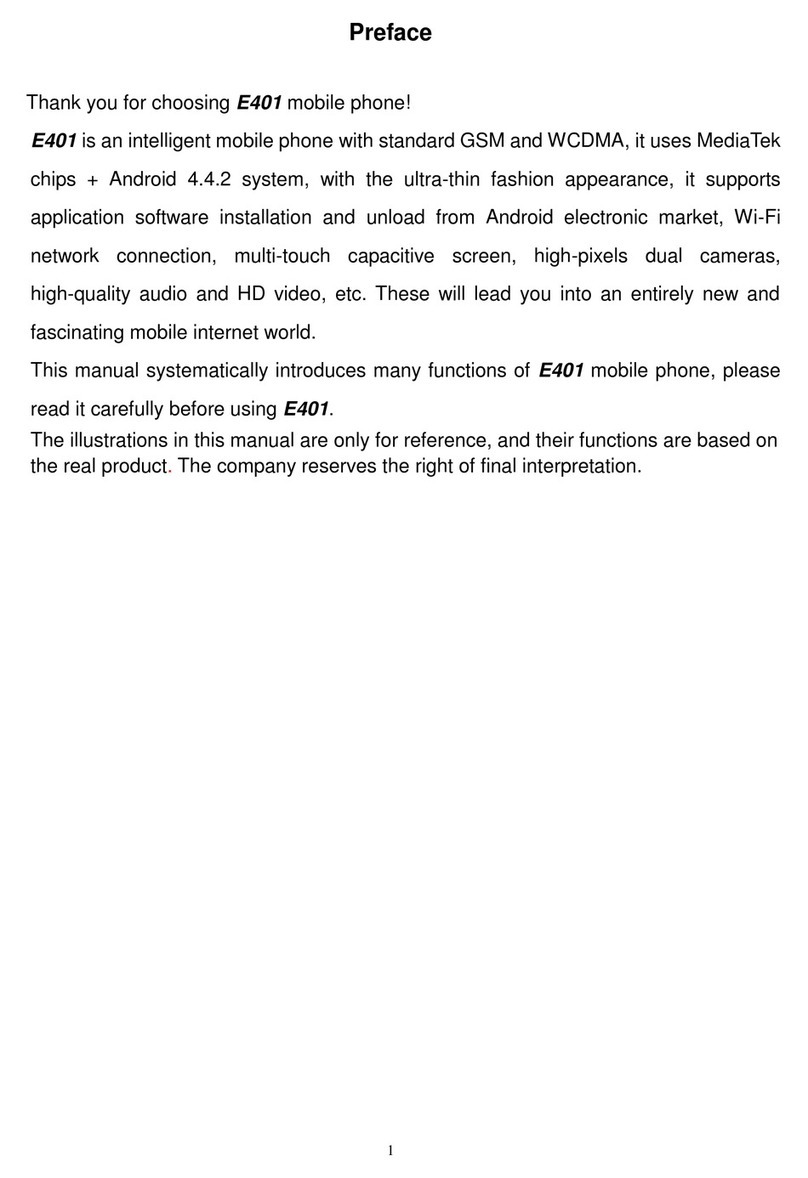WARNING!
•The Trex unit cannot power a 4-wire device. Do not connect Trex unit to
the power terminals of a 4-wire device. This can blow a fuse inside the
Trex unit. The repair/replacement will need to be completed at an
authorized service center.
•Do not connect lead sets to the HART and HART + pwr terminals at the
same time. If the lead sets are connected to devices, this increases the
chance of wiring mistakes and could create a short in the HART loop.
•Do not add any external power to the device when the Trex unit is
powering the device. This can blow a fuse inside the Trex unit. The repair/
replacement will need to be completed at an authorized service center.
Ensure the device is disconnected from the loop/segment and no other
wires are connected to the device before providing power from the Trex
unit.
•Do not use the Trex unit to power a WirelessHART device. Providing
power to a WirelessHART device may damage the device.
•Do not connect the mA terminals (ammeter) in parallel with a powered
4-20 mA current loop. Ammeters have low resistance. This can disrupt
the loop and cause devices to report incorrect values or positioners to
move unexpectedly.
•Do not connect the mA terminals on the Trex unit to a power supply that
is not current limited to 250 mA. This can blow a fuse inside the Trex unit.
The repair/replacement will need to be completed at an authorized
service center.
Power on or off
1. To power on, press and hold the power button on the upper left side of
the Trex unit for one second.
2. To power off, do one of the following:
•Quickly press the power button, and then tap Turn Off.
•Tap Settings or the status bar at the top of the screen, and tap More >
Power Management > Turn off.
Device connections
Use the provided lead set and the Field Communicator application to
communicate with a device. The appropriate device description is also
required. If the Trex unit does not have the HART device description revision,
the device is displayed in generic mode. This mode does not display all device
functionality. If the Trex unit does not have the fieldbus device description,
the device cannot be configured. See the wiring diagrams in the Trex Device
Communicator User Guide for more information.
8Quick Start Guide

